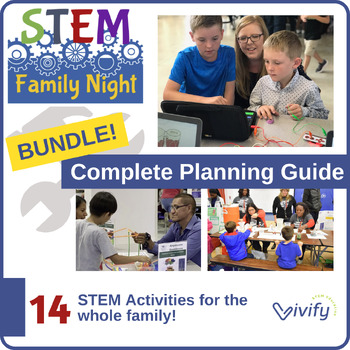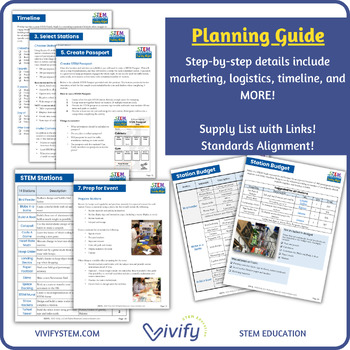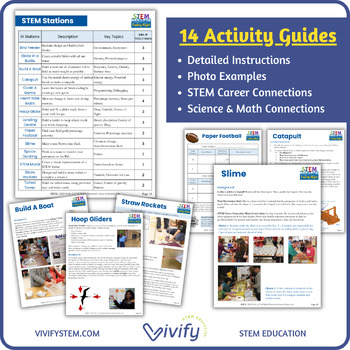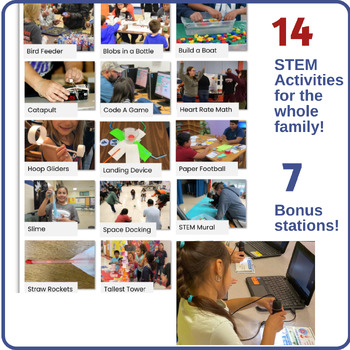STEM Family Night Planning & Activity Guide
- PDF
Also included in
- STEM Family Night Planning Guide + Bonus Stations Bundle! Host a STEM or STEAM Family Night to generate excitement for STEM through hands-on activities and engage the whole school in the benefits of STEM learning!This all-inclusive planning guide has everything you need to host a successful STEM FamPrice $45.00Original Price $68.00Save $23.00
- Are you in need of year-round STEM activities? This growing bundle includes ALL Vivify K-12 STEM lessons from team challenges, engineering design, semester-long STEM units, research projects, and more! Purchase everything for 20% off individual products! Here is a sample of what is included: Stage 1Price $990.24Original Price $1237.80Save $247.56
Description
STEM Family Night Planning Guide
This all-inclusive planning guide has everything you need to host a successful STEM Family Night! The guide was created after experience hosting several successful Family Nights with over 350 participants. The activities have been tested by math and science teachers for both elementary and middle school participants and their families. We hope this guide will give you the confidence to host your own amazing STEM Night!
14 Activity Guides:
- Bird Feeder
- Blobs in a Bottle
- Build A Boat
- Catapult
- Code A Game
- Heart Rate Math
- Hoop Gliders
- Landing Device
- Paper Football
- Slime
- Space Docking
- STEM Mural
- Straw Rockets
- Tallest Tower
Step-by-step planning guide:
This is a full planning guide that includes detailed instructions and tips that walks you through each step of planning your own amazing STEM Family Night! A detailed budget is included as well!
- Get Support
- Secure Date
- Select Stations
- Market Event
- Create Passport
- Arrange Location
- Prep for Event
Activity Guide + Event Signage:
This guide includes editable marketing materials, planning instructions, activity guide for station volunteers,
- Overview including step-by-step planning instructions
- STEM Night Planning Checklist
- Budget including links to materials
- 14 STEM Night Challenges that include: Materials required, Teacher instructions, Pictures of activity in action
- Editable signs for display at the event
- Spanish version of handouts
Looking for more STEM lessons? Our team of engineers and educators is dedicated to developing low-prep and high-quality STEM activities for any classroom! Click below to learn more:
- Vivify's Scope & Sequence + Standards Alignment
- Vivify's Resource Guide
- Learn about the 3 Stages of STEM
- Vivify STEM Membership
Customer Tips:
• Click the Green ★ to follow our store and get notifications of new products and freebies
• Leave feedback to receive TpT credit for use on future purchases
• Questions? Contact us in the Product Q&A section
♥ Connect With Us ♥
Email us: info@vivifystem.com







